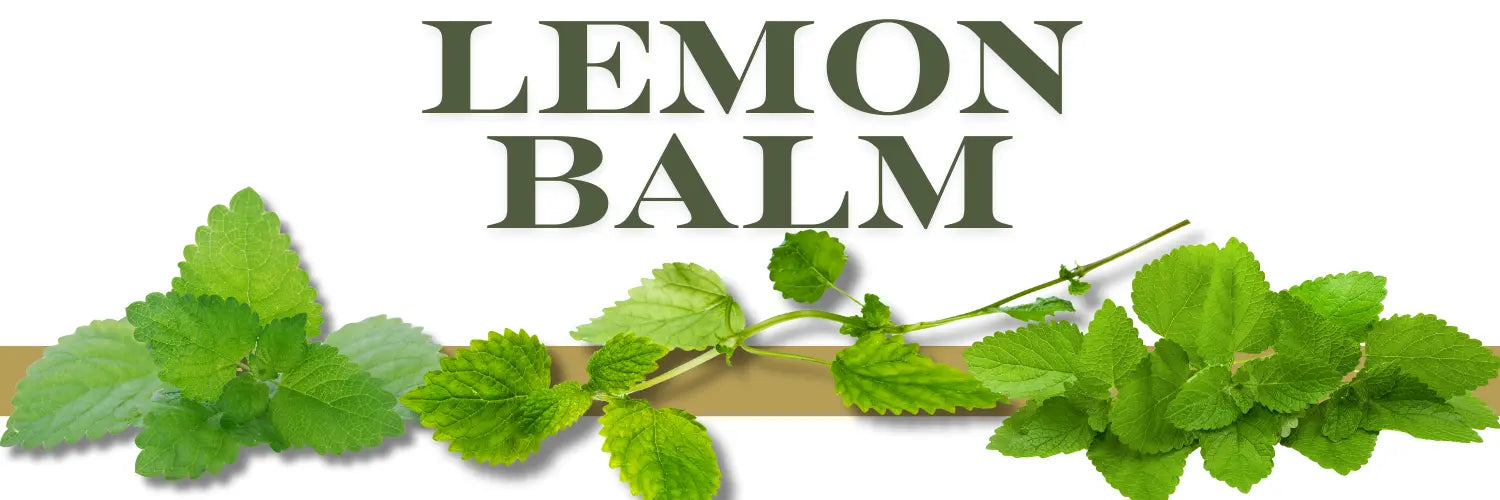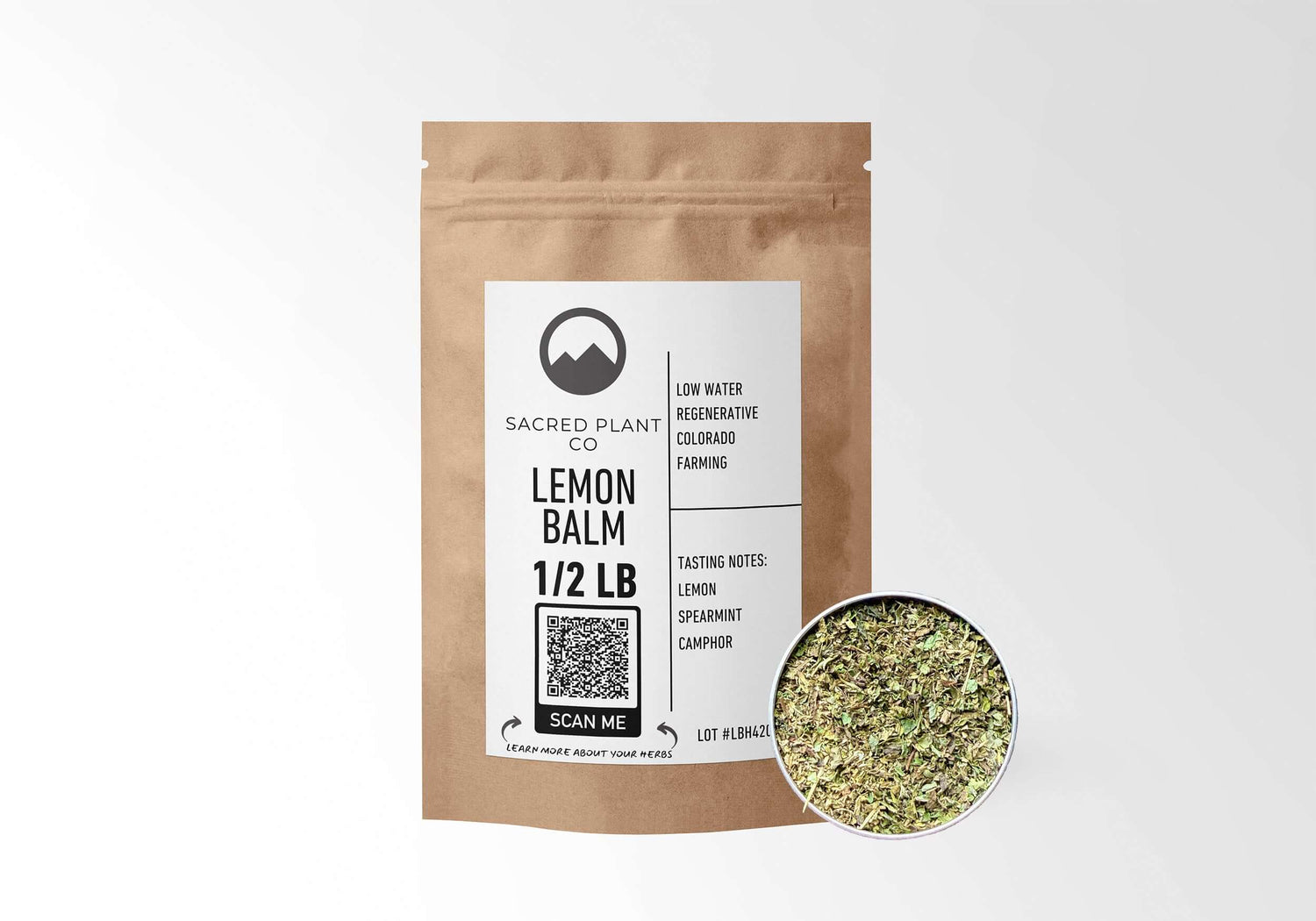Lemon Balm (Melissa officinalis): A Calm Cup and Everyday Uses
Last updated: August 29, 2025
Lemon Balm (Melissa officinalis) is a lemon-scented member of the mint family that many people enjoy for a gentle, calming cup. Its soft, citrus-mint aroma and mild flavor make it a favorite in caffeine-free routines, especially in the evening. You’ll find Lemon Balm throughout traditional European herbals and in many global folk practices, most often prepared as a simple tea or blended with other soothing botanicals such as chamomile, lavender, or a strip of lemon peel for brightness. Because it’s subtle rather than sharp, Lemon Balm pairs well with everyday flavors and is easy to incorporate into a regular tea rotation.
Today, people use Lemon Balm as a small, pleasant ritual—sipped warm before bed, brewed as a midday pause, or prepared as a lightly sweetened iced tea for warmer days. Beyond the cup, the dried leaves can be infused into honey or a basic simple syrup for mocktails and herbal tonics, or combined with other kitchen herbs for gentle culinary accents. For best quality, store dried Lemon Balm in an airtight jar, away from heat, light, and moisture, and rotate stock regularly to keep the aroma fresh.
What Is Lemon Balm
A perennial in the mint family, Lemon Balm has soft, serrated leaves with a bright, citrus-mint aroma. Dried leaves are typically used for tea or blended with chamomile, lemon peel, or a touch of lavender to round the flavor. Because it is mild and aromatic, it fits well in caffeine-free routines, especially later in the day.
Traditional Roots around the World

Historical texts and community practices describe Lemon Balm as a plant associated with calm and everyday comfort. In European herbals it appears in household recipes for evening teas and simple cordials prepared in monastery and cottage gardens, valued for a gentle citrus-mint aroma that suited winding down at day’s end. In other traditions it shows up in blends aimed at mood, digestion, or rest, often paired with chamomile, lavender, or lemon peel to soften the cup and round the flavor.
The plant’s long cultural life is reflected in its name. “Melissa” comes from the Greek for “bee,” and gardeners have long planted it near hives and kitchen plots. As with many heritage herbs, uses vary by place and preparation. A mild infusion may feel different from a stronger decoction or a concentrated extract, and combinations with other botanicals change the experience.
Modern evidence is mixed and depends on the specific product, dose, and study design. Some small studies report benefits for perceived calm or sleep quality, while others are inconclusive. Given that variability, it is reasonable to view Lemon Balm as a gentle option you can fold into a broader routine for relaxation, rather than a cure-all. Start with common culinary amounts, notice how you feel over a week or two, and adjust to taste and context.
Modern Uses: Calm, Mood, and Everyday Comfort
- Evening wind-down: A warm cup can be part of a relaxing routine before bed.
- Daytime pause: Enjoy a light, citrus-mint infusion for a calm break without caffeine.
- Simple digestive comfort: Many sip a mild cup after meals for a pleasant, soothing finish.
Evidence for Lemon Balm varies by preparation and blend. If you are looking for consistent results, try the tea regularly for 1–2 weeks and note how you feel, then adjust leaf amount or steep time to taste.
How to Brew Lemon Balm Tea
Ingredients per cup: 1–2 teaspoons dried Lemon Balm, 8 oz hot water. Optional: honey or lemon.
- Add Lemon Balm to a tea infuser or teapot.
- Pour hot water over the leaves and steep 5–7 minutes.
- Strain. Sweeten if desired. Enjoy warm or cool for iced.
Flavor tips: Combine with chamomile flowers for a softer cup or add a strip of lemon peel for brightness. For a floral note, try a pinch of lavender.
Pairing Ideas and Serving Tips
- Evening blend: Lemon Balm with chamomile and a touch of lavender.
- After-dinner cup: Lemon Balm with lemon peel and a thin slice of fresh ginger.
- Iced pitcher: Brew 4 cups stronger than usual, cool completely, then pour over ice and garnish with a lemon wheel.
Safety and Considerations
- Use common culinary amounts. If you are pregnant or nursing, managing a medical condition, or taking medications, talk with a healthcare professional before regular use.
- If you have plant allergies, try a small amount first and discontinue if you notice irritation or discomfort.
- Store dried leaves in an airtight jar in a cool, dark, dry place. Label and rotate to keep the aroma fresh.
Educational purposes only. Not medical advice.
FAQ
Is Lemon Balm tea caffeine free? Yes. It is an herbal infusion and naturally caffeine free.
How much should I use per cup? Start with 1–2 teaspoons per 8 oz. Adjust steep time and amount to taste.
Can I drink it daily? Many people enjoy a daily cup. Check with your clinician if you have a medical condition or take medications.
What does it taste like? Light citrus-mint with a gentle, soothing character.
What pairs well with it? Chamomile, lemon peel, lavender, or a thin slice of ginger.
How do I store it? Airtight jar, cool, dark, and dry. Use within 12–18 months for best aroma.
Keep Exploring
- Stress Support collection for calming teas and blends.
- Top 10 Lemon Balm benefits for a deeper dive.






